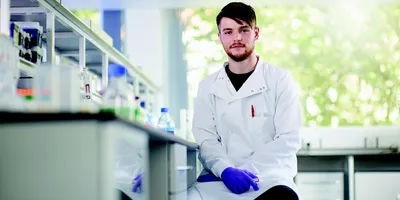Top 5 Questions You Should Ask When Buying a Glove Box
- What applications are you using the glove box for? This will determine exactly what you will need in a glove box, such as an oxygen-free atmosphere, etc.
- Are the incubation and processing separated in order to prevent contamination? This is important if you will be using the glove box for cell culture.
- How much will the glove box cost to acquire and maintain? Are warranties offered? Custom glove boxes are the most expensive, so if a standard model can fit your needs that is probably the better way to go. Making small customizations to an off-the-shelf model is also another less costly option than a fully-custom unit.
- What are your future needs? This will help determine if the smallest unit is really the best option or if a larger option which can accommodate future expansion would make more sense.
- What sort of safety features does the glove box have? These are especially important if you are working with very hazardous materials.
Primary use of glove boxes as reported by survey respondents:
| Research | 59% |
| Clinical | 22% |
| Quality Control | 20% |
| Production | 8% |
| Other | 10% |
Glove box applications as reported by survey respondents:
| Manipulating dangerous, toxic, or moisture-sensitive subjects | 40% |
| Cell culture | 29% |
| Storage and processing of chemicals, metals, calcium, etc... | 22% |
| Air or moisture sensitive analyses | 17% |
| Anaerobic bacterial growth | 15% |
| Maintaining cleanliness for microchips or fabricated parts, sensor calibration | 12% |
| Virus production | 9% |
| Controlled-atmosphere welding | 4% |
| Compounding pharmacy, vaccines | 2% |
| Other | 23% |
Nearly 30% of respondents are engaged in purchasing a new glove box. The reasons for these purchases are as follows:
 | Addition to existing systems, increase capacity | 29% |  |
 | Replacement of an aging system | 28% | |
| Upgrading existing equipment | 14% | ||
 | First time purchase | 12% | |
| Setting up a new lab | 8% | ||
 | Other | 10% |
Top 10 features/factors respondents look for when purchasing a glove box:
| Ease of use | 80% |
| Safety | 79% |
| Product performance for intended application | 67% |
| Low maintenance/operating costs | 56% |
| Ergonomic design | 54% |
| Price | 51% |
| Ease of installation | 46% |
| Availability of accessories/options | 40% |
| Service and support | 38% |
| Small footprint | 32% |
For more information on laboratory glove boxes, including useful articles and a list of manufacturers, visit www.labmanager.com/glove-boxes











